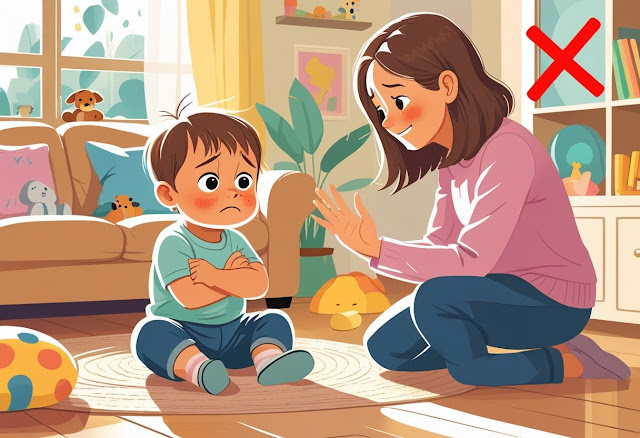Toddler Tantrums: What to Do and What NOT to Do
By Joseph Abu – Real Parent, Real Talk, Real Solutions
🍼 Let’s Be Honest: Toddler Tantrums Are Hard
Hi there,
If you're reading this with a screaming toddler nearby, first off—big hug. I see you. I’ve been you. And I want you to know that you’re not alone, and you’re not a bad parent.
Tantrums are a normal (though incredibly frustrating) part of toddler development. They don’t mean your child is “naughty” or that you’re doing something wrong. They just mean your little one is growing, learning, and figuring out some very big feelings in a tiny body.
In this post, I’ll walk you through what actually works—and what doesn’t—when your toddler is mid-meltdown. I’ll also share my personal experience as a parent and what I’ve learned after five+ years of helping other parents through similar challenges.
😩 Why Do Toddlers Have Tantrums?
Let’s start with the “why,” because when we understand the cause, we can respond with compassion, not just correction.
Common reasons toddlers throw tantrums include:
-
Feeling overwhelmed or overstimulated
-
Hunger or fatigue
-
Frustration (they can’t express what they want)
-
A need for control or independence
-
Changes in routine or environment
Quick truth: A toddler's brain is still under construction. The part that manages emotions (prefrontal cortex) is still developing—so tantrums are literally a natural part of brain growth.
✅ What TO DO During a Toddler Tantrum
1. Stay Calm (Even if You’re Fuming Inside)
Your calm is contagious. I know, easier said than done. But when you stay steady, it helps your child regulate their emotions, too.
💡 Joseph’s Tip: I used to silently count to 5 while taking deep breaths when my daughter would scream in the grocery aisle. It helped me stay grounded and not react impulsively.
2. Get on Their Level
Kneel down, make gentle eye contact, and speak in a soft, reassuring voice. This makes your toddler feel seen and safe.
Example:
"You're really upset right now. I'm here with you."
3. Acknowledge Their Feelings
Instead of dismissing the tantrum, try validating the emotion behind it.
✅ Say: “I can see you’re really mad because we can’t stay at the park.”
❌ Don’t say: “Stop crying! It’s not a big deal.”
4. Offer Simple Choices
Sometimes, tantrums happen because your toddler wants control. Try giving two simple, win-win choices.
Example:
“Do you want to wear the red shirt or the yellow one?”
5. Use Distraction or Redirection
For younger toddlers, a quick redirection can work wonders.
Example:
“Look! There’s a butterfly outside!” or “Let’s go feed your teddy.”
6. Stay Close (Even If They Push You Away)
Some toddlers need space, others need a cuddle. Let them know you’re nearby when they’re ready.
👂 Real moment: My son once screamed “Go away!” during a meltdown. I quietly sat across the room. After a minute, he crawled into my lap.
❌ What NOT TO DO During a Tantrum
1. Don’t Yell or Threaten
This only adds fuel to the fire. Your toddler is already overwhelmed. Yelling might scare them and make them shut down—or scream louder.
2. Don’t Give In to Demands
It’s tempting to hand over that chocolate or toy just to end the tantrum, but this teaches your toddler that screaming = reward.
Instead: Wait for calm, then explain, “When you're calm, we can talk about what you want.”
3. Don’t Shame or Embarrass Them
Saying things like “You’re being a bad boy/girl” can hurt their self-esteem. Focus on the behavior, not their identity.
✅ Say: “Throwing toys is not okay.”
❌ Don’t say: “You’re bad for acting like this.”
4. Don’t Ignore Patterns
If tantrums happen often around nap time or meal time, your child might be tired or hungry. Anticipate the triggers when possible.
💛 How to Prevent Future Tantrums
You can’t stop tantrums completely (sorry!), but you can reduce their frequency by:
-
Keeping a consistent routine
-
Offering choices throughout the day
-
Praising positive behavior (“I love how you used your words!”)
-
Teaching simple emotional words: happy, sad, mad, tired
-
Giving your child time and space to wind down before transitions
🧸 Final Thoughts: Tantrums Don’t Last Forever (Even if They Feel Like It)
Friend, I know it’s exhausting. I’ve wiped tears (mine and theirs), taken deep breaths in locked bathrooms, and questioned myself too many times to count.
But every tantrum is an opportunity—yes, really. An opportunity to teach your toddler emotional skills, build trust, and grow closer as a family.
The next time your little one loses it, try to picture the brain still learning, the heart still growing, and a child who deeply needs your love—even in their loudest moments.
👉 Next Steps or Call to Action
-
Save this article or print it out for your fridge
-
Talk to your partner or caregiver about your “tantrum game plan”
-
Subscribe to my parenting newsletter for weekly calm-in-the-chaos parenting tips 🧡
You're doing a wonderful job. Truly.
With patience, grace, and the occasional snack for you, you’ve got this.
Warmly,
Joseph Abu
Real Dad. Calm Coach. Parenting Writer Who Gets It.


Post a Comment